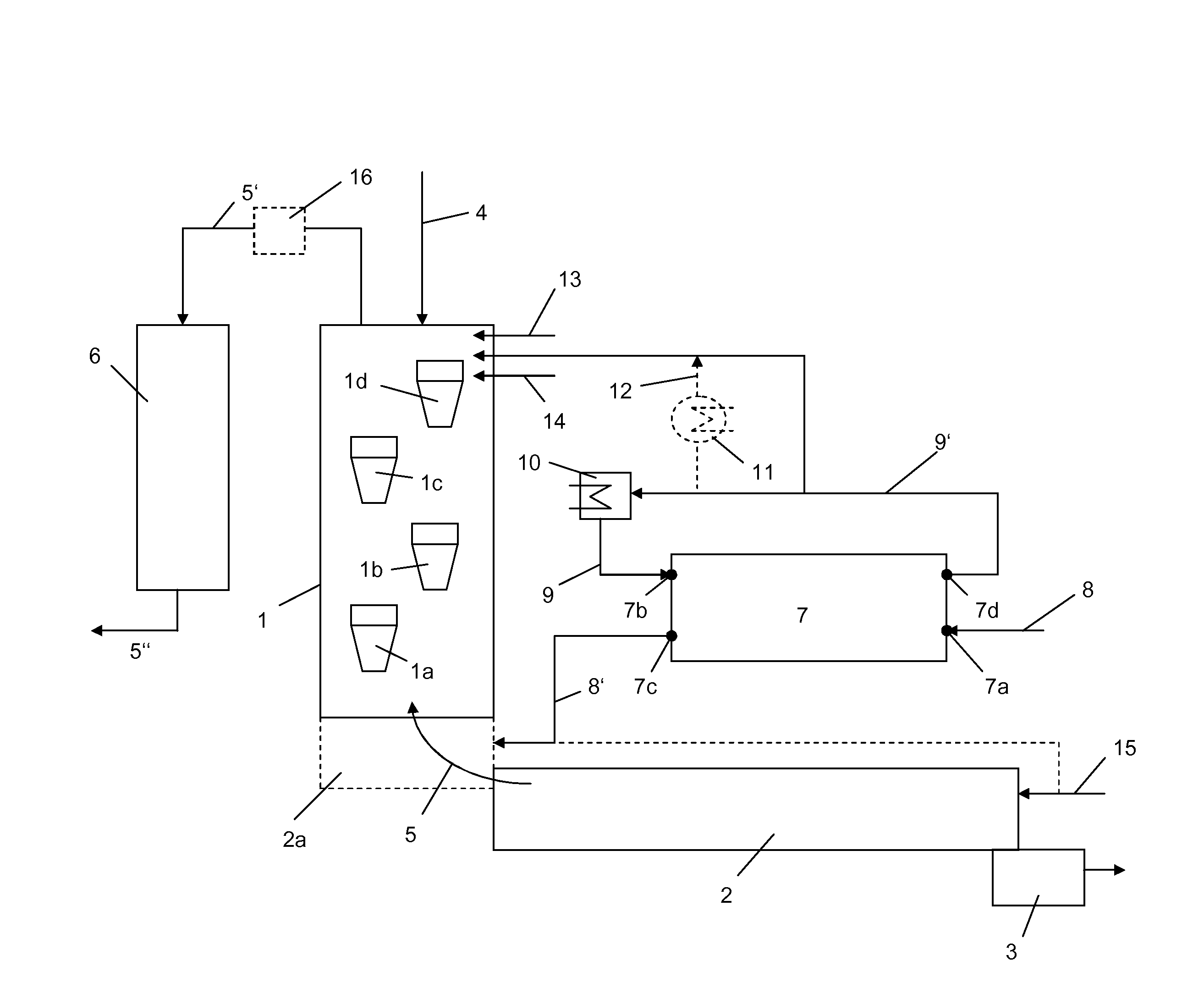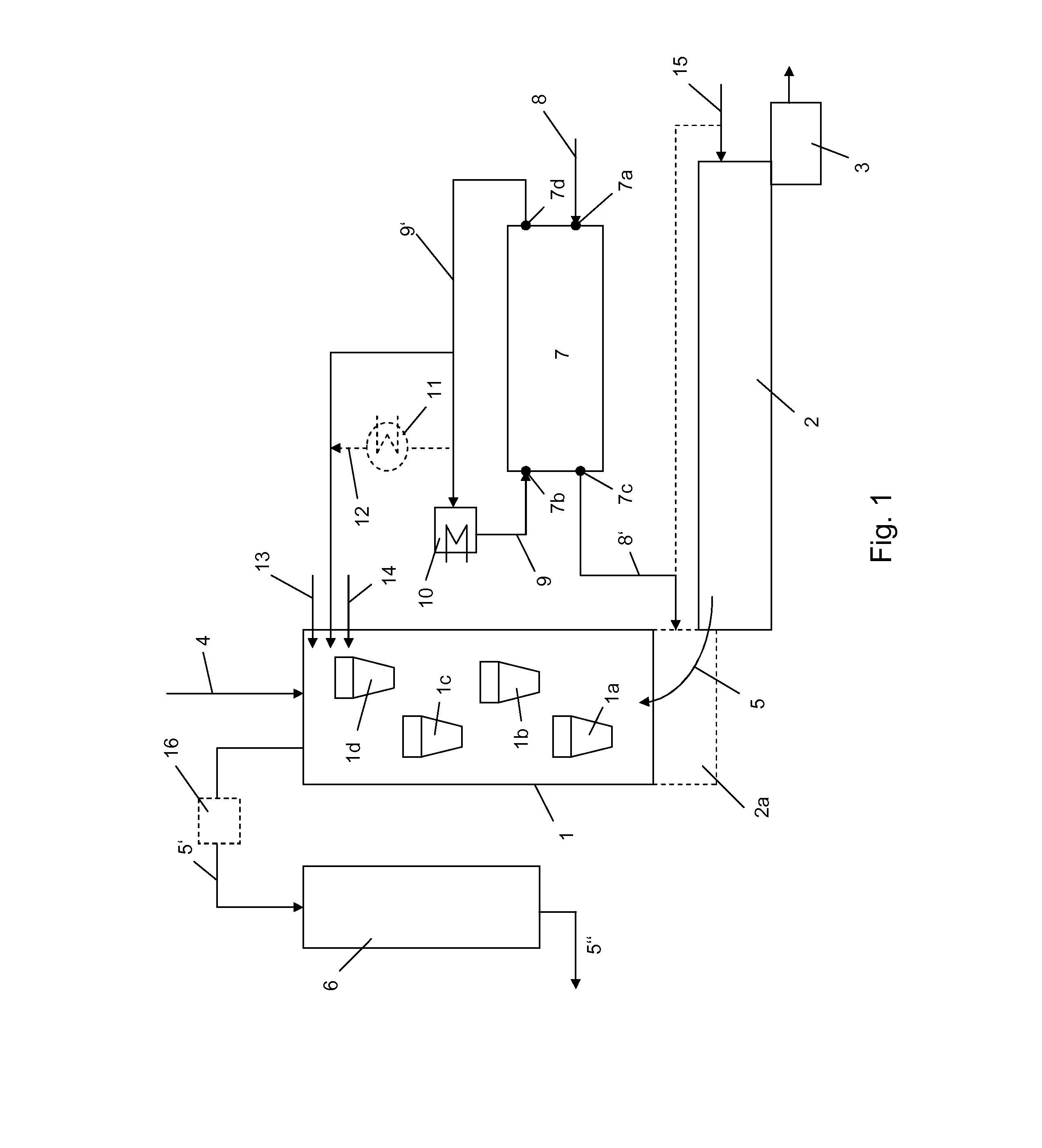Method and installation for producing cement clinker
a cement clinker and installation method technology, applied in the direction of furnaces, lighting and heating apparatuses, furnace types, etc., can solve the problems of increased energy requirements, increased exhaust gas temperature, and change in flame shape and temperature distribution, and achieve high moisture levels, without clinker production limitations
- Summary
- Abstract
- Description
- Claims
- Application Information
AI Technical Summary
Benefits of technology
Problems solved by technology
Method used
Image
Examples
Embodiment Construction
[0026]The installation has a thermal processing device which comprises in the illustrated embodiment a preheater 1, a kiln and a cooler 3. The preheater 1 is constructed as a suspension type heat exchanger with a plurality of cyclone stages la to ld which are arranged one above the other, cement raw meal 4 being preheated in counter-current to exhaust gases 5 which are produced during the clinker production and the calcination. An optional calcinator 2a for calcination of the preheated cement raw meal is further arranged between the preheater 1 and kiln 2.
[0027]The cement raw meal which is burnt to form cement clinker in the kiln 2 is subsequently cooled in the cooler 3.
[0028]The exhaust gas 5′ which leaves the preheater 1 is subsequently cleaned in an SCR catalytic convertor 6, the cleaned exhaust gas 5″ being used in a drying milling installation (not illustrated) or being supplied directly to a process filter. Between the preheater 1 and the SCR catalytic convertor 6 it is option...
PUM
| Property | Measurement | Unit |
|---|---|---|
| temperature | aaaaa | aaaaa |
| temperature | aaaaa | aaaaa |
| temperature | aaaaa | aaaaa |
Abstract
Description
Claims
Application Information
 Login to View More
Login to View More - R&D
- Intellectual Property
- Life Sciences
- Materials
- Tech Scout
- Unparalleled Data Quality
- Higher Quality Content
- 60% Fewer Hallucinations
Browse by: Latest US Patents, China's latest patents, Technical Efficacy Thesaurus, Application Domain, Technology Topic, Popular Technical Reports.
© 2025 PatSnap. All rights reserved.Legal|Privacy policy|Modern Slavery Act Transparency Statement|Sitemap|About US| Contact US: help@patsnap.com


